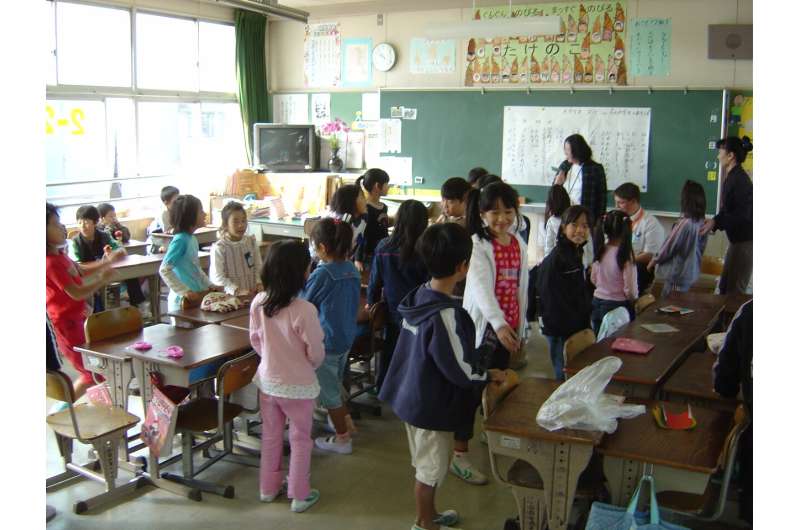This article has been reviewed according to Science X's editorial process and policies. Editors have highlighted the following attributes while ensuring the content's credibility:
fact-checked
proofread
Why do Japanese teachers seem unready to teach critical thinking in classrooms?

Globally, critical thinking (CT) is regarded as a highly desirable cognitive skill that enables a person to question, analyze, and assess an idea or theory from multiple perspectives. CT has become an integral and mandatory part of global educational curricula, but its definition varies across contexts and cultural backgrounds.
To assess the implementation of CT, the Organization for Economic Cooperation and Development (OECD) conducts the Teaching and Learning International Survey (TALIS). In a 2018 survey (TALIS 2018), only 12.6% of lower secondary schoolteachers in Japan taught CT, compared to the global average of 58.1%.
To understand this gap, Assistant Professor Kazuyuki Nomura from Chiba University, Japan, set out to understand the reason underlying Japan's dismal performance in TALIS 2018. The study was published in Educational Philosophy and Theory.
"Japan's poor scoring in teaching CT puzzled me after I read the TALIS 2018 Results. Granted, CT varies from context to context, but little research has been conducted to understand what CT means in Japanese classrooms. Therefore, I took it on," explains Dr. Nomura, an expert in intercultural education, speaking of his motivation for the study.
In this qualitative study, Dr. Nomura conducted semi-structured interviews with 12 certified Japanese schoolteachers from diverse backgrounds, including one from a school for children with special educational needs (SENs), between May and July 2022 to understand their perspectives on CT and the outcomes of TALIS 2018.
All participants agreed that the Japanese adjective "hihanteki" for the English word "critical" had a negative undertone, making most teachers hesitant about introducing CT to their classrooms. Most of the participants also felt that the use of "hihanteki shikoo" as a direct translation of the words "critical thinking" in the TALIS 2018 was not correct. Many teachers were unaware that the national curriculum guidelines contain the concept of CT. Teachers who knew about it and had tried integrating it into their pedagogy were in a sheer minority.
By contrast, multidimensional-multiperspective thinking (MMT), which is a facet of CT, enjoys more acceptance and popularity in Japan since the curriculum guidelines explicitly promote MMT. The study found that while most participants shied away from implementing CT, they were comfortable with MMT and used it regularly in their teaching. Additionally, almost all participants suggested that teaching MMT depends on socioeconomic status (SES), and that teaching MMT in low-SES schools was challenging.
Moreover, "empathy" is a hidden, central pillar of the Japanese school curriculum. All participants concurred that empathy is a core value in Japanese education, and most of them felt that it is impossible to practice CT or MMT without teaching empathy. Coupling MMT with empathy increased the autonomy of schoolteachers in Japan. They struck a delicate balance between the national curriculum, the school culture, and their teaching practice. As a result, they managed to circumvent the power of OECD-led global education.
Still, Dr. Nomura maintains that the merits of global CT can be combined with the Japanese teachers' emic understanding of CT to get the best of both worlds. Through CT skills and empathy, Japanese teachers can enable a growingly diverse student population to think big and beyond the perimeters of Japan.
Although CT and politics go hand-in-hand, as per the law, Japanese schools cannot teach politically controversial topics and must maintain neutrality. To remedy this, he recommends that teachers use non-Japanese or fictional examples to implement CT in their classrooms.
"As Japan is now becoming increasingly multicultural, teachers could use CT skills to help children think about Japan's future, enhance open-mindedness, and live together with others with equity and dignity," suggests Dr. Nomura.
For future research, classroom observations could be the best candidate, given that MMT is a core educational goal in the current national curriculum. The results of this study could thus help spark a much-needed discussion about CT teaching in Japan and elsewhere.
More information: Kazuyuki Nomura, Exploring the emic understanding of 'critical thinking' in Japanese education: An analysis of teachers' voices, Educational Philosophy and Theory (2023). DOI: 10.1080/00131857.2023.2192925
Provided by Chiba University





















